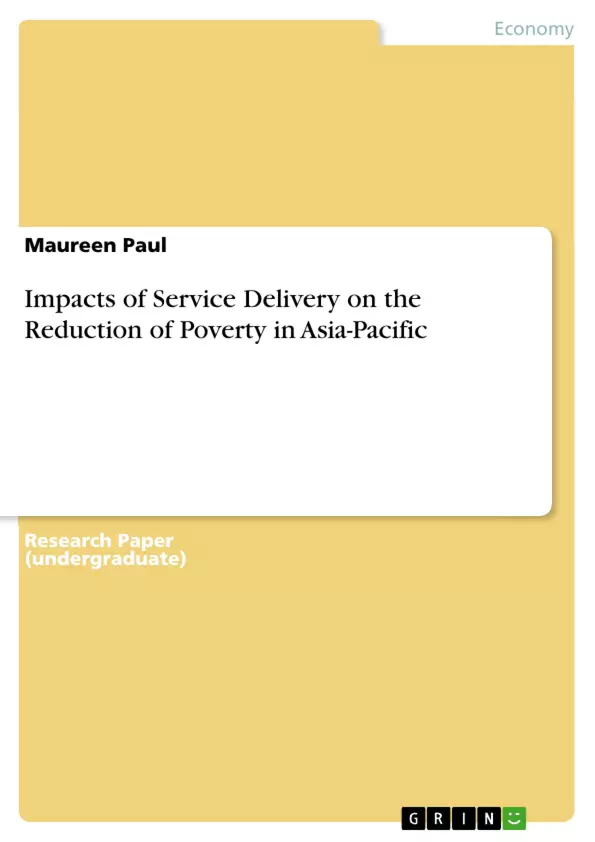The aim of this paper is to highlight different stakeholders’ competence to get rid of poverty in Asia-pacific and how these measures have impacted the country’s welfare.
Poverty continues to be a global problem affecting people either directly or indirectly. Even though there are several factors which can be recognized to being the cause, human factors play a huge role in creating it. Asia-pacific is one of the areas with the chief levels of poverty. Even though there are some areas which can be regarded to be having minimal poverty rates, it is imperative to take into contemplation some areas which have significantly been able to nurture economically regardless of the harsh conditions available in the area. The people's republic of china is a pronounced example when it comes to such a case. However this region might have been able to develop over time, it is imperative to remember that critical measures have been undertaken. Some of the ways this has been made possible include through; Stakeholder involvement in the extermination of poverty in Asia-pacific, the management of urbanization for inclusive development, and Infrastructural development.
To them to do so, different stakeholders have actively been involved towards making sure that relevant measures have been undertaken. The regulation of populations in either setting allows the government and other stakeholders to derive relevant plans aimed at enhancing development. This case is not any different to Asia-pacific countries. As such, countries are adequately prepared with strategies of ensuring that all these processes aimed at combatting poverty have sufficiently been integrated into a country's development activities.
Inhaltsverzeichnis (Table of Contents)
- Introduction
- Statistics Background on Poverty Reduction in the Asia-Pacific
- Stakeholder Involvement in the Eradication of Poverty in Asia-Pacific
- UNDP Rationality Principles
- The Management of Urbanization for Inclusive Development
- Strengthening Responses to Rural Poverty Due To Rural-Urban Migration
- Infrastructural Development
- Conclusion
Zielsetzung und Themenschwerpunkte (Objectives and Key Themes)
The paper aims to highlight the role of various stakeholders in poverty reduction efforts in the Asia-Pacific region and the impact of these measures on national welfare. The analysis focuses on the importance of stakeholder involvement, urbanization for inclusive development, and infrastructure development in achieving poverty reduction goals.
- Stakeholder involvement in poverty reduction
- The role of urbanization in inclusive development
- The importance of infrastructure development
- Challenges in reducing poverty in the Asia-Pacific region
- The impact of poverty reduction measures on national welfare
Zusammenfassung der Kapitel (Chapter Summaries)
The introductory chapter provides an overview of the Asia-Pacific region and the challenges associated with poverty reduction. It highlights the significant economic growth achieved in the region while emphasizing the persistent issue of poverty and the need for comprehensive measures to address it.
The second chapter presents a statistical overview of poverty reduction efforts in specific Asia-Pacific countries, such as Pakistan, Armenia, and Bangladesh. It analyzes the progress made in reducing poverty rates and identifies areas where further interventions are needed.
The third chapter explores the crucial role of stakeholder involvement in poverty reduction initiatives. It discusses the need for collaboration between governments, non-governmental organizations, and other relevant actors in implementing effective poverty reduction strategies.
Schlüsselwörter (Keywords)
The primary keywords and focus topics of this text include poverty reduction, stakeholder involvement, inclusive development, urbanization, infrastructure development, Asia-Pacific region, and national welfare. The paper explores the interconnectedness of these themes and their impact on achieving sustainable poverty reduction goals in the region.
- Citar trabajo
- Maureen Paul (Autor), 2017, Impacts of Service Delivery on the Reduction of Poverty in Asia-Pacific, Múnich, GRIN Verlag, https://www.grin.com/document/376286



